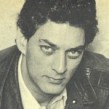Wimberly’s Gratuitous Ninja (Beehive, Dec.) collects the webcomics saga of “pyrate” vs. ninja warfare into a volume of more than 600 accordion foldout comics pages that span 400 consecutive feet.
This is a return to the GratNin universe, right? You’ve told stories with these characters before.
The second comic I ever drew was a GratNin comic, and it was more like a formal thing—I was learning how to make comics, as I still am. I had just read Moebius’s Arzach for the first time. Silent comics. I wanted to practice the fundamentals without worrying about story, dialogue, or even lettering. Every time I start to practice something new, I’ll break these characters out. They’re always true, always faithful.
I enjoyed reading this on-screen but was floored by the print collection. It’s an experience. Why did you undertake this design?
In a time when everything is so easy, when people are always doing two things at once, checking Tinder while they’re watching Netflix and getting their groceries delivered, I think that having something that requires your attention—tactile, sensual—can be radical. Like medicine. Reading a book on paper has become almost transgressive.
You bring an authentic New York perspective to this book. How important is the setting to this story?
I find it far more interesting to fictionalize a place that exists, to look at what’s happening there and alter it to imagine, hyperrealistically, what that place really is, than to create whole cloth something fantastic. I could build these characters and put them here to say small, existential things—concerns that I have, and that the people of New York have, versus some sort of imaginary crisis. I’ve made New York City my home. What’s going on here? The housing shortage is real. Incarceration. The Vernon C. Bain—the boat prison? It’s real. I think they’re closing it down, but when I was first writing the story, it was real. There are people jailed on that boat, often awaiting trial.
What do you hope readers will get out of this print book as an art object?
I don’t expect much of a reader response, to be honest. If I’ve aged at all, it’s into someone who’s caring less about how people take the work. The story’s not as important to me as the feeling, the synthesis of the materials, the characters, the images. This box does what I wanted it to do. Whether you’re looking at the playing cards, the map, the bit of textile, or the packaging—the box is part of the story. I’m hoping that it can give people a full experience.
You know, I never collected Marvel comic books. I’d pick up one or two, and I got an impression of a world that was bigger and more fantastical than any four-and-a-half-hour movie could give me. That’s my endeavor.








